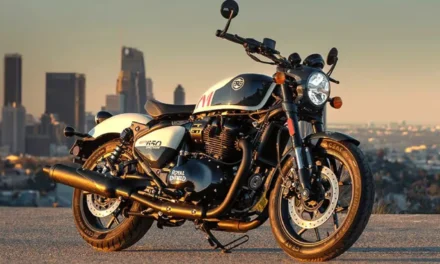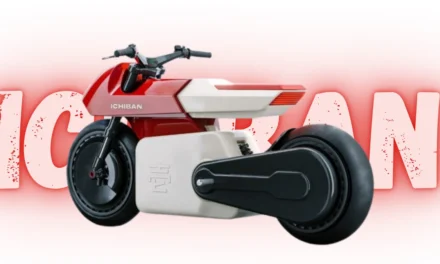The Yamaha XSR 155, with its retro-modern design and Yamaha’s reputation for performance, this bike—already a hit in global markets—could finally hit Indian roads by late 2025. Rumors suggest a launch price between ₹1.4–1.8 lakh. But in a market flooded with retro-styled rivals like the TVS Ronin and Royal Enfield Hunter 350, is the XSR 155 worth the wait? Let’s break down its pros & cons.
Pros: Why the XSR 155 Could Be a Hit
Retro Design with Modern Features
The Yamaha XSR 155 is a head-turner. Its round LED headlamp, brushed-metal fuel tank, and minimalist bodywork pay homage to 1980s cafe racers, while features like USD forks and a digital instrument cluster keep it in the 21st century. For Indian riders, the XSR 155 offers a blend of nostalgia and innovation. Unlike the bulky Royal Enfield Hunter 350, its compact frame (derived from the MT-15) makes it ideal for Bengaluru traffic or cramped Mumbai parking.
Proven MT-15/R15 Platform
The XSR 155 shares its engine and chassis with the MT-15 and R15 V3, two of India’s most reliable performance bikes. The 155cc liquid-cooled engine, with Variable Valve Actuation (VVA), delivers 19.3 PS and 14.7 Nm torque—enough for city streets and occasional highway sprints. Local production of the MT-15 hints at cost-effective manufacturing, keeping the XSR 155’s price competitive.
Lightweight and Commuter-Friendly
Weighing 137 kg (kerb), the XSR 155 is 45 kg lighter than the Hunter 350. This makes it easy to handle in stop-and-go traffic, while its upright handlebars and plush mono-shock suspension ensure comfort. Fuel efficiency is another win: early estimates suggest 45–50 kmpl.
—
Cons: Potential Red Flags
Pricing Concerns
The XSR 155’s biggest hurdle? It’s rumored ₹1.8 lakh price tag. For context, the TVS Ronin (₹1.5–1.7 lakh) offers a larger 225cc engine, Bluetooth connectivity, and dual-channel ABS. Even the Royal Enfield Hunter 350 starts at ₹1.5 lakh. Unless Yamaha prices it aggressively, budget-conscious buyers might opt for better-equipped rivals.
Underpowered for Highway Thrills?
The 155cc engine is peppy for city rides but lacks the grunt of larger-displacement bikes. Overtaking trucks on highways like the Mumbai-Pune Expressway could feel strained compared to the Ronin’s 20.4 PS or Hunter’s 27 Nm torque.
Yamaha’s Retro Track Record
Remember the FZ-X? Yamaha’s previous attempt at a retro-styled bike in India flopped due to its half-baked design and underwhelming performance. The XSR 155 needs to avoid repeating these mistakes. India’s aftermarket scene for Yamaha retro bikes is also limited—unlike Royal Enfield’s vast customization ecosystem.
Long Wait Until 2025
By the time the XSR 155 launches, rivals like the Hero Xtreme 160R 4V or Bajaj Pulsar NS250 could dominate the segment. Waiting two years for a bike with no official confirmation is a gamble, especially when alternatives like the Suzuki Gixxer SF 250 exist today.
Read: Hero Xtreme 250R Engine Performance and Speed Capabilities
—
Yamaha XSR 155 vs. Competitors
– TVS Ronin: Cheaper, tech-packed, and more powerful, but lacks the XSR’s premium design and Yamaha’s sporty pedigree.
– Royal Enfield Hunter 350: A retro icon with an unbeatable road presence, but heavier and thirstier (30 kmpl).
– Bajaj Pulsar NS160: Affordable, sporty, but dated design and no retro appeal.
—
Should You Wait or Look Elsewhere?
Worth the Wait If:
– You crave a retro bike that’s lighter and manageable than a Royal Enfield.
– Your daily commute involves chaotic city traffic, not highway marathons.
– Brand trust and Yamaha’s performance legacy matter to you.
Skip If:
– Your budget is under ₹1.5 lakh.
– You’re a touring enthusiast needing raw power.
—
Conclusion
The Yamaha XSR 155 isn’t perfect—its price and power limitations are real concerns. But for riders seeking a fun, practical retro bike backed by Yamaha’s engineering, it might be worth the wait. Until then, test-ride rivals like the Ronin or Hunter 350 to see if they satisfy. As Yamaha fans say: “Good things come to those who wait… but great things come to those who rev harder.”






